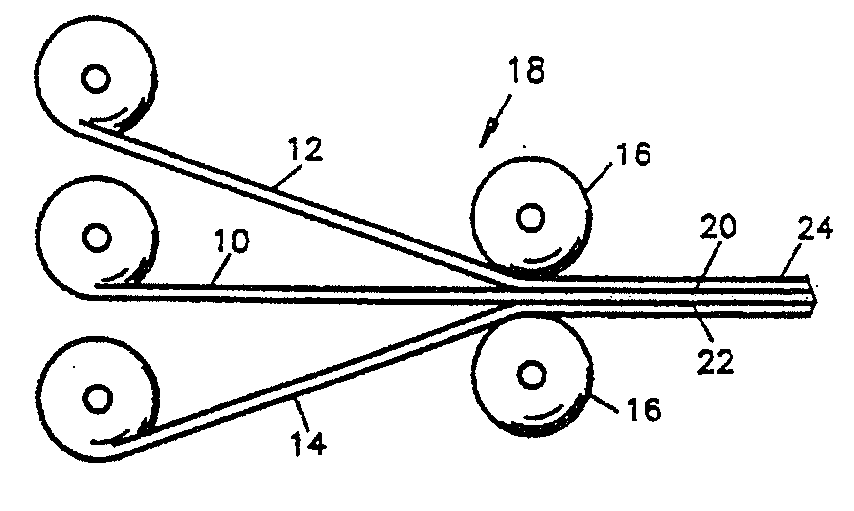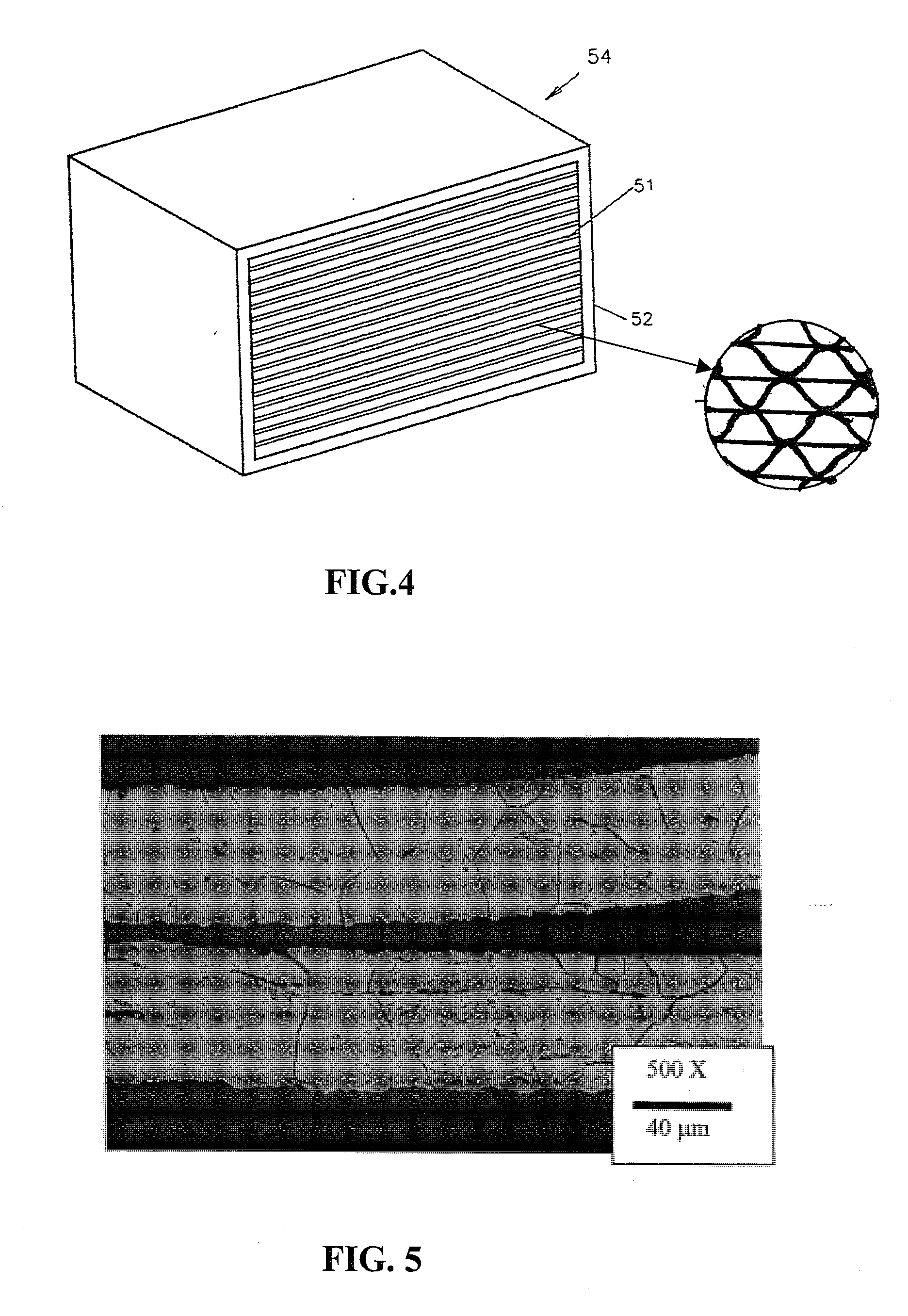In-situ diffusion alloying and pre-oxidation annealing in air of fe-cr-al alloy catalytic converter material
- Summary
- Abstract
- Description
- Claims
- Application Information
AI Technical Summary
Benefits of technology
Problems solved by technology
Method used
Image
Examples
example iii
[0061]This example was carried out identical to Example I except that the heat treatment was performed differently. The honeycomb-like converter samples were made from the foil composite material at a thickness of about 0.002 inches, as described in Example I. These honeycomb-like samples were placed directly into a furnace which was already at a holding temperature of between about 900° C. to about 1150° C., which was well above the aluminum melting point and at alpha alumina formation temperature range, holding for different times from about 10 minutes to about 120 minutes, and then cooled down with the furnace. The heat treatments were performed in the atmosphere of air instead of in vacuum condition. The details of the different heat treatment schedules is listed in Table 4 below. After the heat treatments, the composite material foil in the honeycomb-like converter samples became homogenous as showed in FIG. 5, while an alumina film was formed on the surfaces of the material as...
example iv
[0064]This example was carried out identical to Example III except the heat treatment schedule was different. The honeycomb-like catalytic converter roll samples were placed into a conventional heat treating electric furnace which had already reached a temperature of about 720° C. and was then heated to a temperature of about 980° C. within approximately 30 minutes and held for about 2 hours followed by furnace cooling. The treated converter samples were then coated by catalysis wash coating. The special tests showed that the adhesion between catalysis wash coating and pre-oxide surfaces of materials in the catalytic converter samples were strong and acceptable from the industrial standard.
[0065]The novel process and article produced by method of the present invention provides for a foil material which can be used in catalytic converters, wherein the foil material exhibits improved corrosion resistance at elevated temperatures, improved thermal dimension stability, and excellent sur...
PUM
| Property | Measurement | Unit |
|---|---|---|
| Temperature | aaaaa | aaaaa |
| Temperature | aaaaa | aaaaa |
| Time | aaaaa | aaaaa |
Abstract
Description
Claims
Application Information
 Login to View More
Login to View More - R&D
- Intellectual Property
- Life Sciences
- Materials
- Tech Scout
- Unparalleled Data Quality
- Higher Quality Content
- 60% Fewer Hallucinations
Browse by: Latest US Patents, China's latest patents, Technical Efficacy Thesaurus, Application Domain, Technology Topic, Popular Technical Reports.
© 2025 PatSnap. All rights reserved.Legal|Privacy policy|Modern Slavery Act Transparency Statement|Sitemap|About US| Contact US: help@patsnap.com



